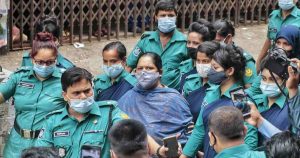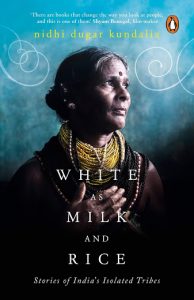Mostafa Kamal Majumder
I began attempting scoop news items apart from doing event-based stories and started attracting more attention of seniors and gradually made my place secure in The Bangladesh Times. One such report was on the worsening teacher-student relations in the University of Dhaka. The problem owed its origin to a rapid increase in the number of students after the liberation of Bangladesh. This increased the teacher-student ratio thus reducing interactions between them. The director of the DU Teacher-Students Centre was very helpful to me in preparing the scoop news. The centre popularly called TSC was created in 1961 precisely to help the growth of teacher-student interactions for a healthy pursuit of academic activities through cultural programmes. Apart from offering a big auditorium facility and a self-service cafeteria, a substantially large lawn with a Greek monument on one side and a swimming pool, the TCS had rooms for students to practice cultural activities, music, one publication centre cum bookstall, a photographic society and a self-help typing room to prepare applications and do other urgent work. A Janata Bank branch was also situated in the TSC main building. The post-liberation DU Natya Chakra grew up based on the TSC facilities. But curiously enough teachers’ participation at TSC programmes came down day by day. Subsequently, the Centre also housed the office of Badhan of voluntary blood donation, Dhaka University Debating Society, Dhaka University Film Society, Dhaka University Tourist Society, Dhaka University Journalists Association, Dhaka University Chess Club, Dhaka University Model United Nations Association, Rover Scout and different socio-cultural groups of students.
After the publication of two of my reports on teacher-student relations, senior colleagues in The Bangladesh Tims sought to know from me the story ideas I was working on. Clearly, my bosses were satisfied with my story planning. During this period I overtime developed a very good relationship with the Centre for Urban Studies of the University and its Director Prof Nazrul Islam. An urban geographer Prof. Nazrul was working on slums in the metropolis. There was a huge growth of slums in Dhaka in the aftermath of the 1973-74 floods and riverbank erosion. Gradually hawkers started to set up wayside shops in different areas of Dhaka City. I collected information on ‘Hawkers in city streets’ and prepared a report out of that. The report, however, was not well received at my newspaper office as the gate-keepers were more concerned about playing safe. Slums and hawkers on city streets would be unpleasant stories to people in the corridors of power that be. I was shocked because this was an urban and social issue which cannot be suppressed or hidden. However, a report based on a field survey of a tornado that devastated Vederganj in greater Faridpur in 1977 received good treatment. The survey was conducted by the Centre for Urban Studies. The report contained descriptions on the tornado based on eye-witness accounts of people who suffered its onslaught.
One day Prof. Nazrul Islam told me his senior Prof Aminul Islam has expressed his interest to talk to me on environmental issues. I gladly went to Prof Aminul Islam’s room and was happy to benefit from his expert observations on different developments. Prof. Aminul Islam said tornadoes were hardly known to Bangladesh before. But since the deadly Demra Tornado of 1969 such violent storms were hitting the country at intervals. And with the passage of time, the frequency of tornadoes was increasing. He thus posed a hypothetical question as to whether the climate is changing. I made a report based on the interview and supporting information. The following day a piece of long box news appeared on the front page of the paper under the headline, ‘Is climate changing?’ The story was so well-received that in the forenoon legendary journalist leader Gias Kamal Chowdhury was the first one to congratulate me for the report on the way to the National Press Club from The Bangladesh Times office. On the following day Bangladesh Sangbad Sangstha (BSS), official news agency, creeded a news item based on a statement from Green Peace, Europe, supporting the hypothesis that there was something wrong with the climate. I must acknowledge that Chief Reporter Alamgir Mohiuddin did sharpen the intro of the story increasing its attraction. It should be noted that this was years before the Woods Hole Research Center of the USA floated the thesis of climate change.
Prof Nazrul Islam used to invite me to important events organized by his centre where geographers working at government departments, institutions and private organisations used to come upon invitation. This helped increase my interactions with many decision-makers working in government departments or private organisations. Thus the top bosses and senior officers of institutions like the Dhaka Improvement Trust (now Rajdhani Unnayan Katripakhya), the Urban Development Directorate, the Department of Housing and Settlement (now the National Housing Authority) became my intimate sources of information.
At this stage, I came into contact with Prof Abul Hasnat of the Bangladesh University of Engineering and Technology (BUET). Prof. Abul Hasnat used to work at the Department of Architecture and Planning. One day he handed over to me the monograph of research which showed hap-hazard developments taking place in the country without proper regional planning. Contents of the monographs and an interview with him helped me make a big story ‘Development without regional planning threatens economic viability’. It was the lead news item of the paper on one day and attracted the attention of not only my seniors but also of people at different levels of the government and the society. Prof Abul Hasnat did not continue at BUET for a long time and left for abroad.
The relationship with Prof. Nazrul Islam grew so intimate over the years that on the Habitat Day in 1996 he nominated me to interview then Housing and Urban Works Minister Mohammad Nasim along with him (Prof. Nazrul Islam) and the chairman of RAJUK Engr. Khadem at the Bangladesh Secretariat. That year the Awami League came to power for the first time after the 1975 debacle. For the said interview the Urban Development Directorate had prepared a script and a questionnaire which I found too official and bookish. I suggested to the minister that I ask questions for answers from him instead of recording the set questions and answers. The Minister agreed and the interview was done at his office chamber. The interviews of Prof. Nazrul Islam and Engr Khadem were taken separately at an adjacent room. The script was prepared by me and recorded after the interview. Interestingly enough the TV crew took the handwritten script from me and I was never paid the honorarium that I was supposed to get as the scriptwriter and the anchor man.
09 June 2020




